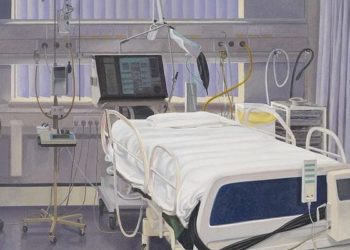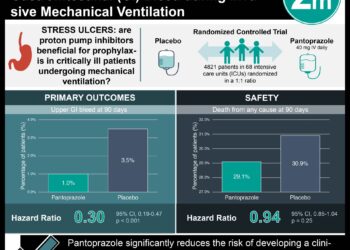Clinical practice algorithm reduces endotracheal aspirate cultures in PICU
1. In a single center quality improvement project, implementation of a clinical practice algorithm in mechanically ventilated patients in the pediatric ICU lead to a significant reduction in the number of endotracheal aspirate cultures (EACs) obtained.
2. Length of stay, mortality, and readmissions were unchanged despite the decrease in EACs.
Evidence Rating Level: 2 (Good)
Study Rundown: Ventilator-associated infections (VAIs) are commonly encountered in the pediatric intensive care unit (PICU) setting. There is a lack of consensus regarding the use and interpretation of EACs in managing VAIs, as growth of bacteria does not necessarily correlate with active infection. Therefore, overuse of EACs may lead to unnecessary antibiotic use. In this study, researchers implemented a clinical practice algorithm that aimed to standardize the use of EACs in mechanically ventilated patients in their PICU. Data was analyzed from 1 year prior to the project implementation until 1 year afterwards. In the post-intervention period, the monthly rate of EACs decreased by 41%, while length of stay, readmissions, and in-hospital mortality were stable. An estimated $26,000 was saved in the year after the guideline was implemented. Despite its single-center design, this study provides an important framework for the creation of a national consensus guideline to standardize the use of EACs in mechanically ventilated pediatric patients.
Click to read the study in Pediatrics
Relevant Reading: The lack of specificity of tracheal aspirates in the diagnosis of pulmonary infection in intubated children
In-Depth [retrospective cohort]: This study was performed in the PICU at Johns Hopkins Children’s Center in Baltimore and included all mechanically ventilated patients between April 2017 and March 2019. A clinical practice algorithm was developed by collaborating PICU respiratory therapists, physicians, and nurse practitioners. The algorithm required an increased quantity of secretions from the patient’s baseline in addition to at least one other sign of infection (increased ventilator settings, fever/hypothermia, leukocytosis/leukopenia, elevated CRP, new infiltrate on chest radiograph) in order to warrant collection of an EAC. The monthly rate of EACs per ventilator days decreased by 41% (incidence rate ratio [IRR]: 0.59, p<0.001) in the post-intervention period. Additionally, there was a 54% absolute reduction of EACs obtained reflexively with urine and blood cultures. In-hospital mortality, hospital length of stay and readmissions, PICU length of stay and readmissions, and severity and mortality scores were not significantly different before and after the guideline was implemented.
Image: PD
©2020 2 Minute Medicine, Inc. All rights reserved. No works may be reproduced without expressed written consent from 2 Minute Medicine, Inc. Inquire about licensing here. No article should be construed as medical advice and is not intended as such by the authors or by 2 Minute Medicine, Inc.







